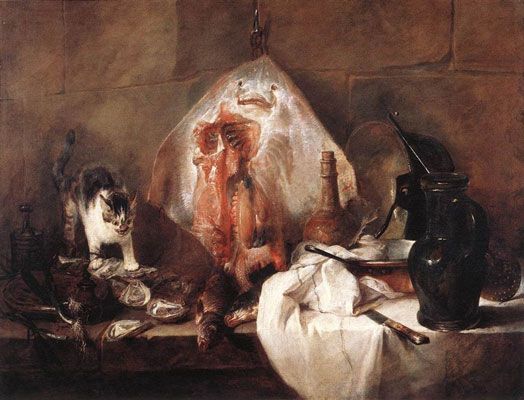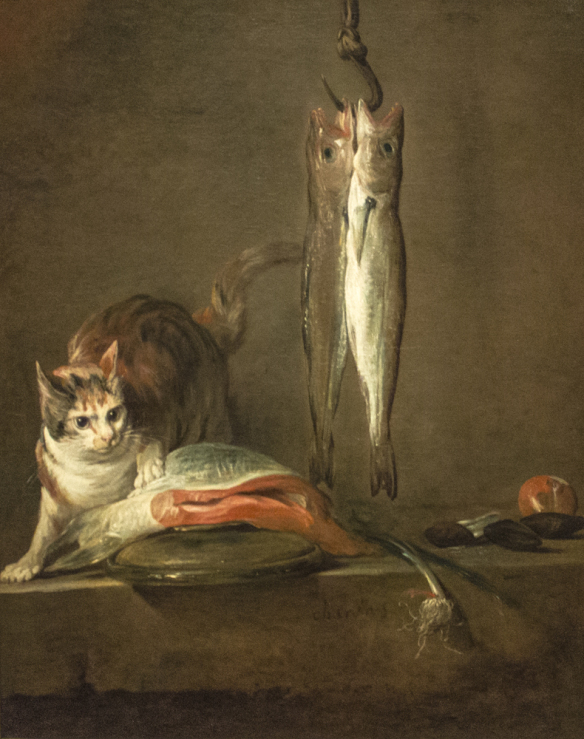Jean-Baptiste Chardin
Jean-Baptiste Chardin was a French painter born in 1699 Paris, France. He was well known for painting scenes of ordinary people doing things in their daily life. He also did still life paintings of simple objects. Chardin became a member of Académie Royale de Peinture et de Sculpture in 1728 after presenting The Ray and The Buffet. He was a well-known artist at the Salon as he regularly had his work featured. He became an important figure at the Salon since he was a counsellor, treasurer, secretary and, oversaw some installations of exhibits.


Despite his success throughout his life, his final years were quite depressing. The new academy director reduced Chardin’s pension and stripped away his duties at the academy. To add to that Chardin’s eyesight weakened, which resulted in him using pastels since they were easier for his eyes. Today his pastel paintings are incredibly popular and valued, but during his time they were not seen that way. Most of the art he did in his final years was not admired or significant.


Many artists and people of the time enjoyed Chardin’s ability to portray simple ordinary still life and everyday ordinary people and objects. Denis Diderot, an art critic was fond of Chardin’s work. In the 1800s when people came upon his art, it inspired and influenced many artists such as Édouard Manet, Paul Cézanne, Henri Matisse, Georges Braque, Giorgio Morandi and Lucian Freud. His work made its way to the Louvre around 1860


Just like most people of his time, Chardin stood out to me because compared to other artists he focused on the simplicity of ordinary people. He was also one of the only and most well known still life artists. His still-life paintings really resonated with me because he had a lot of still life with a variety of dead animals and meat. He also painted cats alongside the meat which I liked. I enjoy that majority of his pieces involve dull muted colours and are very soft looking since it is very different from my style of painting.
Sources
“Jean-Baptiste-Siméon Chardin”. En.Wikipedia.Org, 2020, https://en.wikipedia.org/wiki/Jean-Baptiste-Sim%C3%A9on_Chardin
“Jean-Baptiste-Simeon Chardin | Biography & Facts”. Encyclopedia Britannica, 2020, https://www.britannica.com/biography/Jean-Baptiste-Simeon-Chardin.
Jeff Burgess
Max,
Good work on Chardin! You have in-depth research combined with your personal feelings and insights on the artist. This is what I’m looking for in theses posts. Keep it up!
Jeff